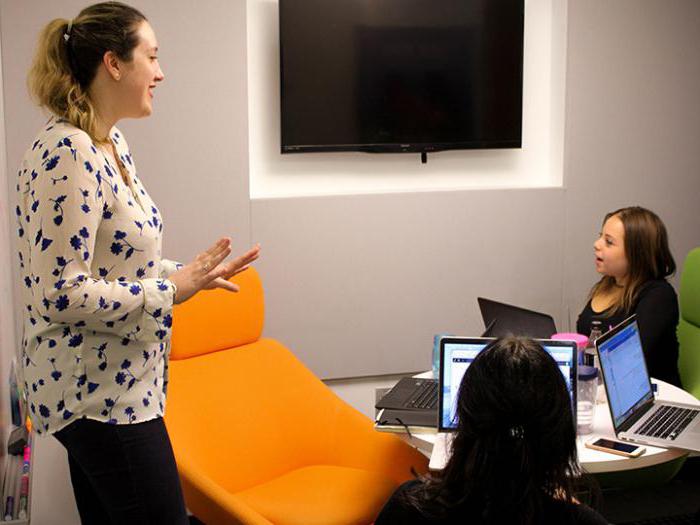It is impossible to compare a person with a machine: he cannot work all the time. In accordance with the opinions of employers, this option is very inconvenient, but you have to reckon with it. Experts, however, have to reckon with the fact that the oldest relationship between fun and work has not been revised even today. If their will, some would be forbidden to do anything else besides business, while others would expand the limits of time for fun to the stop. The law takes into account the common interests in a compromise manner, clearly defining breaks in work.

Break classification
Everyone knows that there is a lunch break. In any organization, there is a specially allotted time for this. Nevertheless, today there are other breaks during the working day, which employees of various structures often do not know about - but in vain. It would be advisable to get acquainted in detail with the possibilities for legally breaking away from work. So, experts have developed an appropriate classification. In accordance with it, breaks in work are divided into the following numerous groups:
- Special and general.
- Recommended and required.
- Those that are included in the remuneration, and those that are not included.
Interruptions in work, which are of a general nature, in accordance with the Labor Code, must be provided to absolutely all employees. Such a right to rest is enshrined in law. This group includes a lunch break, as well as possible short-term breaks so that the employee can organize his personal needs.
Special breaks stand only with certain areas of work. In addition, these include breaks in work for certain categories of workers. These include PC users, tobacco workers, as well as women who have small children (in this case, a break is provided for feeding).
If we touch on recommended and mandatory breaks, then the latter should include those whose provision is nothing less than the duty of any employer. The need for interruptions of a recommended nature in each structure is identified by its own methods and, of course, is formalized through local regulations.
Mandatory is a lunch break, as well as breaks for feeding and heating the baby, which are of a special nature. It is important to add that almost all types of breaks are included in paid time. However, a large break for food and rest in organizations, as a rule, is not paid.

Setting breaks
To begin with, it should be noted that the varieties, the beginning, the duration, as well as other categories characterizing the provision of a break, are established through collective and labor contracts, as well as the rules of the work schedule within a given organization. It is important to note that such time is specified in the labor contract only when for a particular employee it is different from the general structure.
For example, in this document, the employer may indicate the conditions associated with the provision of breaks to merchandisers, sales agents and other employees who have “field” working conditions, that is, those who are not endowed with the opportunity to foresee how long it will take to work with various clients or negotiations .
Food and rest
Article 108 of the Labor Code of the Russian Federation establishes the obligation of any employer to all employees to provide during working hours a shift (daily) break for meals and rest. Its duration should be equal to or greater than thirty minutes, but should not be more than one hundred and twenty minutes. It is important to note that the duration of the break within this period is fixed by means of the internal documentation of the structure, as a rule, this is the PTR.
Article 108 of the Labor Code of the Russian Federation establishes that during a work shift (day) an employee should be given a break for meals and rest, not included in working hours. In addition, the specific duration, as well as the time period for the provision of the break, is established by the labor regulations within the organization or in accordance with an agreement between the employee and the employer.
At work, where due to working (production) conditions it is not possible to provide a break for meals and rest, the employer undertakes to provide the employee with the opportunity to eat and rest directly during work. The list of such works, as well as the places where you can take breaks for rest and meals, are established through the rules of the work schedule within the structure.

Break Unpaid
The unpaid lunch break should be understood as the fact that the employee has the right to use it for absolutely any personal purpose. So, today the lunch break serves not only to eat. People go shopping, go on dates, pick mushrooms in a nearby forest belt, sleep at home, finally.
Naturally, without exception, nowhere, and by no means all employees of an organization during the shift have the opportunity to break away from work to relax or eat. For example, through the Order of the Ministry of Science and Education, it is indicated that people who work in the field of education (educators, teachers, teachers, etc.) are not entitled to interrupt their work and leave for personal affairs. So, their lunch break coincides with the lunch break of the children for whom they are responsible and whom they teach. In this case, a break, one way or another, is paid to education workers.
It should be noted that the employer does not undertake, however, is vested with the full right to establish several modes of labor activity. Accordingly, then breaks during the working day will have different durations and take place at different times for different categories of employees. This position, as a rule, is noted in local acts of the structure.
For example, the Russian Ministry of Transport decided to establish the specifics of the interruptions of air traffic controllers and drivers. So, if an 8-hour working day is not relevant for drivers, and they work more, then in this case two breaks are given for rest and food, the duration of which varies from thirty to one hundred and twenty minutes. It is necessary to add that the dispatchers who operate the aircraft at night receive, in accordance with the law, an additional sixty minutes of rest. These breaks are not included in billable time.

And if part-time?
Probably, many readers have a question whether there is a need to provide a break at work for rest and meals when people carry out work in accordance with part-time work or part-time. It is important to note that in the Russian labor legislation there are no comments and reservations on this subject. This means that the employer undertakes to provide such employees with a lunch break, the duration of which, at the initiative of the employer, as a rule, is thirty minutes (the minimum specified by law).It is necessary to add that, with the consent of a part-time employee, it is possible to identify part of the working day during which it can be left without a break for food and rest.
It is important to note that the employer has the right to make a “floating” lunch break. Thus, only the duration is strictly noted by means of the PTRA, and a temporary corridor is also formed, however, the employee himself determines with the approval of the department’s leadership when it begins. By the way, if the matter concerns only one employee, whose work mode is individual, you can deal with the issue without the need for PTS. As a rule, in this case, absolutely all the features of the breaks provided to him, as well as the beginning and end of the working day, are reflected through an employment contract or an additional agreement to it. Then, when an employee, on his own initiative, decides to use the lunch break for work, this is only his choice. However, the employer is not obligated to pay for the corresponding work.
Personal needs
It must be remembered that the obligations of the employer related to the provision of short breaks for psychological unloading, a cup of coffee, going to the toilet or smoking are not fixed in regulatory legal acts. Nevertheless, in the methodological recommendations, where the duration of the work shift (day) and other working time standards are determined, it is determined that in order to reduce the degree of employee fatigue it is advisable to allow such breaks provided that they are included in working hours.
Typically, such breaks are given ten to twenty minutes per working day (shift). However, their duration may vary somewhat, which primarily depends on the conditions of employment. Installation of such breaks is carried out through local legal acts of the structure. By the way, the most humane tenants organize a special room for rest. It is there that employees have the opportunity to relieve stress and relax for a while.

Technological break
Article 109 of the Russian Labor Code provides for special breaks. They are necessary due to the characteristics of the production process, technology and the specifics of the work. Of the variety, the duration, purpose and conditions of provision are determined through the PTR and the collective agreement.
A break of this kind can be provided, for example, to those who work continuously on computer equipment, especially when the tension and severity of their work is quite high. So, a person working at a computer should, after every sixty minutes of work, take a break for ten to fifteen minutes. In total, about fifty to ninety minutes are allotted for this throughout the day.
Examples
As a rule, in accordance with the decision of the employer, a technological break is included in paid hours of work. Such breaks can be provided to workers who cope with the monotonous production activities at the conveyor. In addition, such gaps are given to air traffic controllers who work behind the console with a video display. So, they undertake to interrupt their work for twenty minutes after each one hundred twenty-minute period of work. In addition, the provision of technological breaks applies to drivers who must be interrupted for fifteen minutes after one hundred eighty minutes and then repeat this action every hundred and twenty minutes.

Work in the cold and in the heat
It is important to note that for those who work in the winter in rooms without heating or in the open air, an 8-hour working day (no more) is provided.This should include movers, janitors and (if required by circumstances) other workers.
In accordance with article 109 of the Russian Labor Code, they are entitled to special regulated breaks of a paid nature for rest and heating, which, one way or another, should be included in working hours. It is important to note that the duration of each of these breaks should equal or exceed ten minutes. It is necessary to add that during the rest, employees, as a rule, stay in special rooms, the equipment of which is occupied by the employer. There they have the opportunity to take off their outer clothing and keep warm. In this case, the following conditions are very important:
- The temperature in rooms specially equipped by the tenant must be equal to or exceed twenty-one degrees.
- To heat hands and feet in special rooms should be heaters, the temperature of which varies from thirty-five to forty degrees.
- During breaks, employees are not recommended to leave the heated rooms for a time period exceeding ten minutes at a temperature of minus ten degrees. If the street is slightly colder, then you can leave for only five minutes.

For feeding a baby
It is important to note that through the Labor Code of the Russian Federation, working women who have children under the age of one and a half years are guaranteed a break that equals or exceeds thirty minutes, after each working period of three hours, to feed the baby. Then, when such a child is not alone in the family, the corresponding break should be equal to or exceed sixty minutes.
It is important to note that in the case of a standard eight-hour day, an employee of an organization is vested with the absolute right to two such breaks. So, on her part, it is advisable to file an application regarding the connection of these time periods to the lunch break or their transfer to the end or beginning of the working day.
It is necessary to supplement that breaks on feeding, one way or another, are included in working hours. Thus, the payment for them is calculated as the average wage taking into account the unified social tax, personal income tax, pension contributions and, of course, mandatory insurance contributions for accident insurance during the work process.
As it turned out, in the process of developing the types and duration of the breaks, the specialists took into account the interests of both the employer and the employee. In case of non-compliance with these requirements, it is easy and simple to make trouble. So, employers who refuse employees legal breaks are likely to pay a fine:
- For officials, the amount varies from one to five thousand rubles.
- In relation to individual entrepreneurs, suspension of activity for three months is attached to this amount.
- With respect to legal entities, a fine of thirty to fifty thousand rubles is imposed, as well as a suspension of activity for three months.